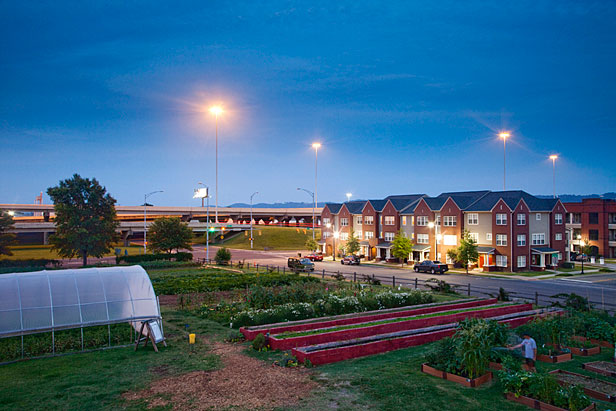Ed Glaeser, everyone's favorite urban economist, loves density and (he says) local, seasonal oysters. But he also says that, as a rule, locally grown produce can shove it, because in all cases density > any other public policy goal.
Glaeser argues that urban farms will lead to less dense cities, which will increase the world's carbon emissions. Here's his math:
Today, about 250 million Americans live on the 60 million acres of this country that are urban — which is about four people per acre. By contrast, America uses 442 million acres for cropland and 587 million acres for pastureland, which is about 1.4 and 1.9 acres per person respectively. If we allocated just 7.2 percent of this agricultural land into metropolitan area, we would halve metropolitan area densities.
But luckily for all of us who like locally sourced food besides oysters, Glaeser's argument doesn't stand up well to criticism. As Treehugger points out, no one was saying that urban farms should displace land where people could live! They're growing in popularity in places like Detroit where density is decreasing anyway. In more dense places like New York, no one's planning to raze a dense neighborhood like Murray Hill (although that might count as a public good) in order to build a farm. Farms are going up on rooftops that weren't doing much more than absorbing heat and making summer nights in the city suffocating.
In fact, it seems to us like density and urban farming could complement each other. More density would free up space somewhere — either within metropolitan areas or on their edges. In a place like New York, "local food" can come from 400 miles away because it's so expensive to buy land in rich suburban areas like the Hudson Valley. If cities get more dense and attract people away from their sprawly McMansion towns, farmers could move in closer.




